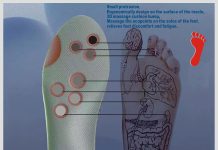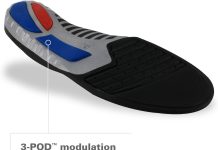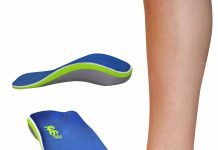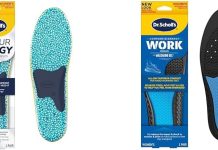If you’re dealing with discomfort caused by capsulitis, finding the right kind of insoles can make a significant difference in your pain relief journey. Capsulitis, the inflammation of the joints located in the ball of your foot, can be incredibly painful and can impact your mobility and overall quality of life. In this article, we will explore various types of insoles specifically designed to target the pain caused by capsulitis, helping you find the relief you’ve been seeking. So, if you’re ready to take a step towards more comfortable and pain-free days, let’s dive into the world of insoles that can bring you the relief you deserve.
What is capsulitis?
Capsulitis is a condition that affects the joints in the foot, particularly the metatarsophalangeal (MTP) joints. It occurs when the ligaments surrounding these joints become inflamed and irritated. This can cause significant pain and discomfort, making it difficult to walk or participate in daily activities.
Definition
Capsulitis is defined as the inflammation of the joint capsule, which is a fibrous structure that surrounds and supports the joints. In the case of capsulitis, the joint capsule in the foot becomes inflamed, leading to pain and discomfort.
Causes
The exact cause of capsulitis is often unclear, but there are several factors that can contribute to its development. These may include:
- Repetitive stress: Activities that involve repetitive stress on the foot, such as running or jumping, can increase the likelihood of developing capsulitis.
- High impact activities: Engaging in high impact activities that put excessive pressure on the feet can also contribute to the development of capsulitis.
- Foot deformities: Certain foot deformities, such as bunions or hammertoes, can increase the risk of capsulitis.
- Poor footwear choices: Wearing shoes that do not provide adequate support or have a narrow toe box can put extra strain on the joints, leading to capsulitis.
- Foot biomechanics: Abnormal foot biomechanics, such as having a high arch or flat feet, can contribute to the development of capsulitis.
Symptoms
The symptoms of capsulitis can vary depending on the severity of the condition, but common symptoms include:
- Pain in the ball of the foot: The most common symptom of capsulitis is pain in the ball of the foot, particularly near the base of the toes.
- Swelling and inflammation: The affected area may become swollen and inflamed, causing discomfort and making it difficult to put weight on the foot.
- Difficulty walking: As the pain and inflammation worsen, it may become increasingly difficult to walk or bear weight on the affected foot.
- Tingling or numbness: Some individuals with capsulitis may experience tingling or numbness in the toes or ball of the foot.
The role of insoles in relieving capsulitis pain
What are insoles?
Insoles, also known as shoe inserts or orthotics, are devices that are placed inside the shoes to provide additional support, cushioning, and alignment to the feet. They are designed to improve foot function, distribute pressure more evenly, and reduce discomfort.
Why are insoles helpful for capsulitis?
Insoles can be highly beneficial for individuals suffering from capsulitis. They help alleviate pain by providing support to the foot and relieving pressure on the affected joints. Insoles can also improve foot alignment and reduce excessive motion, which can further reduce the strain on the foot.
Types of insoles for capsulitis relief
There are different types of insoles available for capsulitis relief, each with its own unique features and benefits. Some commonly used types of insoles for capsulitis relief include:
- Orthotic insoles: These insoles are specifically designed to provide support and correct faulty foot mechanics. They often have features such as arch support and metatarsal pads to alleviate pressure on the affected joints.
- Gel insoles: Gel insoles are made from soft gel materials that provide excellent cushioning and shock absorption. This can help reduce pain and discomfort associated with capsulitis.
- Memory foam insoles: Memory foam insoles conform to the shape of the foot, providing customized support and pressure relief. They are known for their excellent cushioning properties and can help relieve capsulitis pain.
- Custom-made insoles: In some cases, a healthcare professional may recommend custom-made insoles that are specially molded to fit the individual’s foot. These provide the highest level of personalized support and can effectively alleviate capsulitis pain.
Key features to look for in insoles for capsulitis relief
When choosing insoles for capsulitis relief, there are several key features to consider. These features can greatly impact the effectiveness of the insoles in providing pain relief and support. Some important features to look for include:
Proper arch support
Insoles with proper arch support can help distribute weight more evenly across the foot, reducing pressure on the affected joints. Look for insoles that provide adequate arch support, especially if you have high arches or flat feet.
Metatarsal support
Capsulitis primarily affects the MTP joints, so insoles with metatarsal support can alleviate pressure on these joints. Look for insoles that have cushioned metatarsal pads or domes to provide targeted support.
Cushioning
Insoles with cushioning properties can provide shock absorption and reduce impact on the foot. Look for insoles made from materials such as gel or memory foam for optimal cushioning.
Shock absorption
For individuals with capsulitis, reducing the impact on the foot is crucial for pain relief. Insoles with shock-absorbing properties can help cushion the foot and reduce the strain on the affected joints.
Materials
Consider the materials used in the construction of the insoles. High-quality, durable materials are important for longevity and effectiveness. Look for insoles made from materials that are breathable, moisture-wicking, and odor-resistant.
Size and fit
Proper fit is crucial for insoles to provide optimal support and pain relief. Make sure to choose the right size insoles for your shoes and ensure they fit snugly without being too tight or too loose.
Different types of insoles for capsulitis relief
There are various types of insoles available for capsulitis relief, each with its own advantages and disadvantages. Understanding the different types can help you make an informed decision about which type may be most suitable for your needs.
Orthotic insoles
Orthotic insoles are designed to correct foot alignment and improve foot function. They can help alleviate capsulitis pain by providing support, stability, and proper weight distribution. Orthotic insoles are typically made from rigid or semi-rigid materials and often include features such as arch support and metatarsal pads.
Gel insoles
Gel insoles are made from soft gel materials that provide excellent cushioning and shock absorption. They can help reduce pressure and provide relief from capsulitis pain. Gel insoles are known for their comfortable feel and can be particularly beneficial for individuals with sensitive or tender feet.
Memory foam insoles
Memory foam insoles conform to the shape of the foot, providing customized support and pressure relief. They are highly cushioning and can effectively reduce discomfort associated with capsulitis. Memory foam insoles are comfortable to wear and mold to the contours of the foot for optimal support.
Custom-made insoles
In some cases, a healthcare professional may recommend custom-made insoles for capsulitis relief. These insoles are specially molded to fit the individual’s foot and provide personalized support. Custom-made insoles offer the highest level of customization and can effectively alleviate capsulitis pain.
Choosing the right insoles for capsulitis relief
When selecting insoles for capsulitis relief, it is important to consider several factors to ensure the best possible outcome. Here are some tips to help you choose the right insoles for your specific needs.
Consult a healthcare professional
If you are experiencing chronic or severe capsulitis pain, it is advisable to consult a healthcare professional, such as a podiatrist or orthopedic specialist. They can assess your condition and provide recommendations on the most suitable type of insoles for your specific needs.
Consider your specific needs
Take into account your individual foot characteristics and the severity of your capsulitis. Factors such as arch height, foot shape, and the level of support required should be considered when choosing insoles. A customized approach can ensure the best fit and pain relief.
Evaluate insole features
Consider the key features discussed earlier, such as arch support, metatarsal support, cushioning, shock absorption, materials, and fit. Evaluate each feature based on your specific needs and choose insoles that provide the necessary support and pain relief for your capsulitis.
Try different options
It may be necessary to try different types of insoles to find the one that works best for you. Consider experimenting with different materials, thicknesses, and styles to determine which insoles provide the greatest pain relief and overall comfort.
Tips for using insoles effectively to relieve capsulitis pain
Once you have chosen the right insoles for your capsulitis, it is important to use them effectively to maximize pain relief. Here are some tips for using insoles effectively:
Wear insoles consistently
Consistency is key when it comes to using insoles for capsulitis relief. Wear your insoles consistently, even when you are not experiencing severe pain. By providing ongoing support and cushioning, the insoles can help prevent further inflammation and alleviate discomfort.
Use insoles according to instructions
Follow the manufacturer’s instructions for using the insoles. Some insoles may need to be trimmed to fit your shoes properly, while others may have specific care instructions. Adhering to the instructions will ensure optimal effectiveness and longevity of the insoles.
Combine with other treatments
Insoles can be used in conjunction with other treatments to provide comprehensive relief for capsulitis pain. Consider combining insole use with treatments such as ice or heat therapy, over-the-counter pain medications, or physical therapy exercises for maximum benefits.
Gradually increase usage
If you are not accustomed to wearing insoles, it is advisable to gradually increase usage. Start by wearing the insoles for a few hours each day and gradually increase the duration as your feet become accustomed to the support. This will help prevent any potential discomfort or adjustment issues.
Managing capsulitis pain with additional measures
In addition to using insoles, there are several measures you can take to manage capsulitis pain effectively. These measures can complement the use of insoles and aid in the overall treatment and recovery process.
Resting and reducing activities
Resting the affected foot and reducing activities that exacerbate the pain can help alleviate capsulitis symptoms. Avoid high-impact activities or prolonged periods of standing or walking, especially when experiencing acute pain.
Applying ice and heat therapy
Alternate between applying ice and heat therapy to the affected area to reduce inflammation and soothe pain. Ice therapy can help decrease swelling, while heat therapy can promote blood flow and relax the muscles.
Physical therapy exercises
Engaging in specific physical therapy exercises can help strengthen the foot muscles, improve flexibility, and enhance stability. These exercises can be tailored to your specific condition and may include range of motion exercises, toe curls, or toe stretches.
Choosing appropriate footwear
Wearing proper footwear is essential for managing capsulitis pain. Opt for shoes that provide adequate arch support, cushioning, and room in the toe box. Avoid high heels, narrow shoes, or shoes with a thin sole, as these can worsen symptoms and put additional strain on the affected joints.
Potential complications and when to seek medical attention
While insoles and additional measures can provide relief for capsulitis pain, there are instances where medical attention should be sought. It is important to be aware of potential complications and seek medical assistance if necessary. Seek immediate medical attention if you experience:
Long-lasting or worsening pain
If your capsulitis pain persists or worsens despite using insoles and following other treatment measures, consult a healthcare professional. Prolonged or worsening pain may indicate a more serious underlying issue that requires further evaluation and intervention.
Numbness or tingling
The presence of numbness or tingling sensations in the foot may indicate nerve involvement or potential nerve damage. This requires prompt medical attention to prevent further complications or permanent damage.
Difficulty walking
If your capsulitis pain is severe enough to significantly impact your ability to walk or bear weight on the affected foot, it is advisable to seek medical attention. Difficulty walking may suggest a more severe case of capsulitis or the presence of other foot-related conditions that require medical intervention.
Other associated symptoms
Pay attention to any other associated symptoms that may arise, such as redness, warmth, or swelling around the affected joint. These symptoms could indicate an infection or another underlying condition that requires medical attention.
Prevention tips for capsulitis
Prevention is always better than treatment when it comes to capsulitis. By following a few simple tips, you can reduce your risk of developing this condition. Consider the following preventive measures:
Maintain a healthy weight
Maintaining a healthy weight is essential for foot health. Excess weight can increase the strain on your feet, exacerbating existing foot conditions or making you more prone to developing capsulitis. Maintain a balanced diet and engage in regular exercise to promote a healthy weight.
Wear proper footwear
Investing in good-quality footwear that provides proper support and cushioning is crucial for preventing capsulitis. Wear shoes that fit well, have adequate arch support, and a wide toe box to prevent overcrowding and pressure on the toes.
Listen to your body
Pay attention to any early signs of foot discomfort or pain and do not ignore them. If you notice any unusual sensations or discomfort in your feet, take a break, rest, and apply appropriate measures to alleviate the symptoms. Ignoring early signs can lead to more severe foot conditions.
Stretch and strengthen foot muscles
Regularly stretching and strengthening the muscles in your feet can help improve foot function and prevent issues such as capsulitis. Simple exercises such as toe curls, toe stretches, and Achilles stretches can help maintain flexibility and strength in the foot muscles.
Conclusion
Capsulitis can be a painful and debilitating condition, but with the right approach and care, it can be effectively managed and relieved. Insoles play a crucial role in providing support and reducing pressure on the affected joints, making them a valuable tool in the treatment of capsulitis. By choosing the right type of insoles, using them effectively, and complementing them with additional measures, you can significantly alleviate capsulitis pain and improve your quality of life. Remember to consult a healthcare professional for personalized advice and guidance on the best treatment plan for your specific condition. With proper care, prevention, and treatment, you can reduce the risk of capsulitis and maintain healthy feet.









































